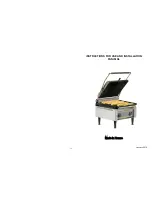
18
| English
Operation
Starting Operation
u
Pay attention to the mains voltage. The voltage of the
power source must match the voltage specified on the
rating plate of the power tool. Power tools marked
with 230 V can also be operated with 220 V.
u
Products that are only sold in AUS and NZ:
Use a resid-
ual current device (RCD) with a nominal residual current
of 30 mA or less.
Setting the Rotational Direction (see figures J–K)
u
Only push the rotational direction switch
(5)
when the
power tool is not in use.
The rotational direction switch
(5)
is used to change the ro-
tational direction of the power tool. However, this is not pos-
sible while the on/off switch
(7)
is being pressed.
Clockwise rotation:
To drill and drive in screws, slide the
rotational direction switch
(5)
downwards on the left-hand
side and upwards on the right-hand side at the same time.
Anti-clockwise rotation:
To loosen and unscrew screws and
nuts, slide the rotational direction switch
(5)
upwards on the
left-hand side and downwards on the right-hand side at the
same time.
Setting the Operating Mode
Drilling and screwdriving
Set the selector switch
(2)
to the "drilling"
symbol.
Impact drilling
Set the selector switch
(2)
to the "impact
drilling" symbol.
The selector switch
(2)
clicks into place and
can also be actuated when the motor is running.
Mechanical Gear Selection
u
You can press the gear selector switch
(9)
with the
power tool running at a low speed. You should not do
this at full load or maximum torque, or when the tool is
not in use, however.
You can preselect two speed ranges with the gear selector
(9)
.
First gear:
Low speed range; for working with a large
drilling diameter or for screwdriving.
Second gear:
High speed range; for working with a small
drilling diameter.
If the gear selector
(9)
cannot be swivelled all the way to the
stop, turn the drive spindle slightly with the drill.
Switching on/off
To
start
the power tool, press and hold the on/off switch
(7)
.
Press the lock-on button
(6)
to
lock
the on/off switch
(7)
in
this position.
To
switch off
the power tool, release the on/off switch
(7)
;
or, if the switch is locked with the lock-on button
(6)
, briefly
press the on/off switch
(7)
and then release it.
Overload clutch
The power tool is equipped with an overload
clutch (anti-rotation) to limit high torque reac-
tions.
u
If the application tool jams or snags, the power trans-
mission to the drill spindle will be interrupted. Always
hold the power tool firmly with both hands to with-
stand the forces this may create and adopt a position
with stable footing.
u
Switch the power tool off immediately and remove the
application tool if the power tool becomes blocked.
Switching on when the drilling tool is blocked may
cause high torque reactions.
Rapid switch-off (Kickback Control)
(GSB 24-2)
The rapid switch-off function (Kickback
Control) gives the user greater control over
the power tool and offers them better pro-
tection than power tools that do not have
Kickback Control. The power tool will switch off if it sud-
denly and unforeseeably rotates around the drilling axis.
To
switch the tool back on
, release the on/off switch and
then press it again twice.
u
If the Kickback Control function is defective, it will no
longer be possible to switch the power tool on. Have
the power tool serviced by a qualified repair person
using only original replacement parts.
Adjusting the Speed/Impact Rate
You can adjust the speed/impact rate of the power tool when
it is on by pressing in the on/off switch
(7)
to varying ex-
tents.
Applying light pressure to the on/off switch
(7)
results in a
low rotational speed/impact rate. Applying increasing pres-
sure to the switch increases the speed/impact rate.
Preselecting the speed/impact rate
You can preselect the required speed/impact rate using the
speed preselection thumbwheel
(8)
, even during operation.
The required speed/impact rate is dependent on the mater-
ial and the work conditions and can be determined by prac-
tical trials.
Speed Electronic Preselection (GSB 21-2 RCT)
With the thumbwheel for electronic speed preselection
(3)
,
the required speed/impact frequency can be selected even if
the machine is running.
The required speed/impact rate depends on the material
and the working conditions; it can be ascertained through
practical tests.
1 609 92A 580 | (30.03.2020)
Bosch Power Tools
















































